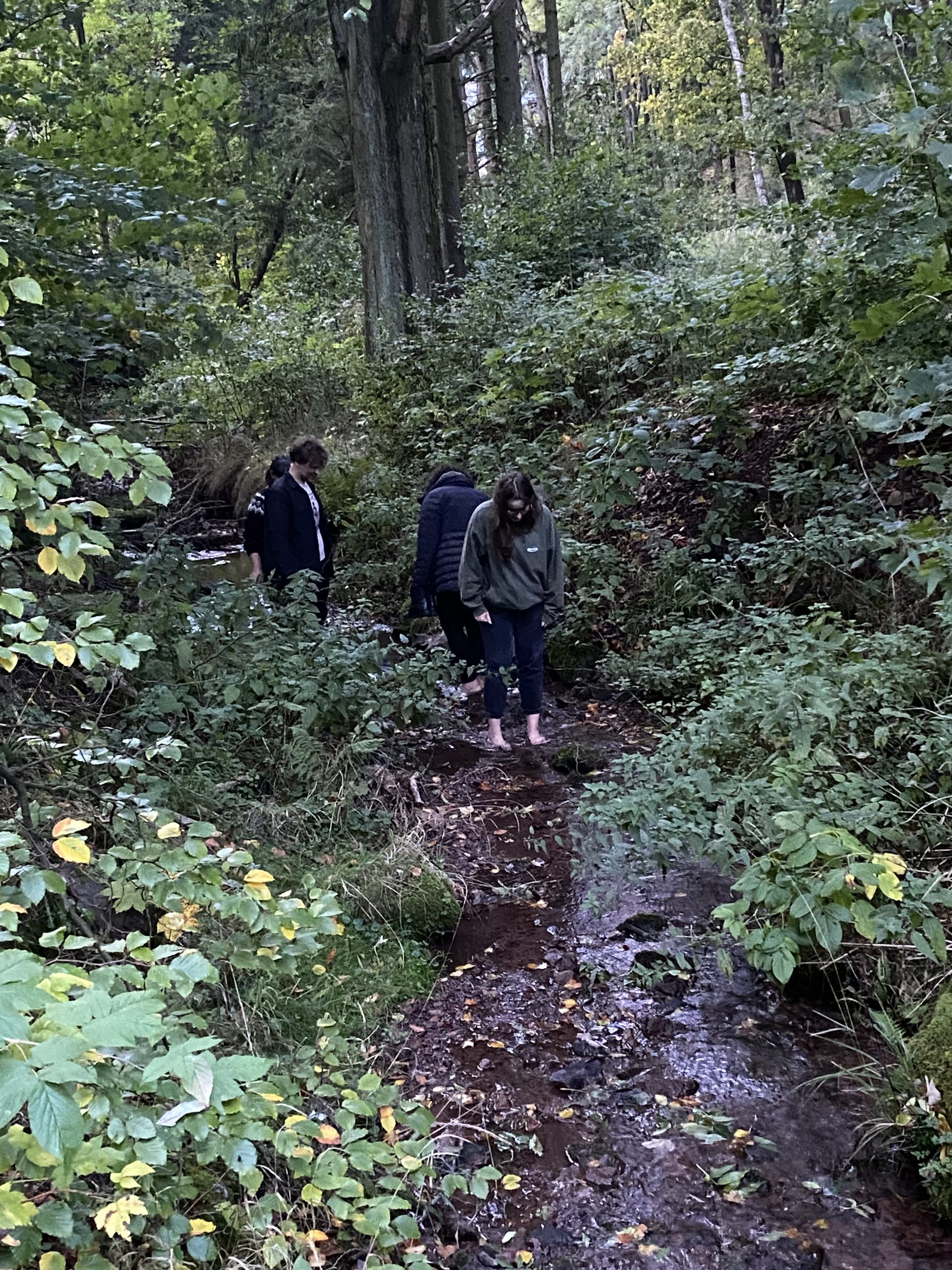Designing is the designer’s attitude towards the social and material environment. One of its fundamental goals is to make life happy. Therefore, it is also the organization of feelings, and in any case, influencing feelings.
A. Pawłowski, Man — Environment. Initiations, ed. cited, p. 61–62.
Our exercises are inspired by a quote from Andrzej Pawłowski’s book accurately defining the role of designers in today’s world. Creating optimal conditions for human development and protecting it from the negative impact of progressing development is crucial for mental comfort. We have decided to propose several practices related to Andrzej Pawłowski’s concept of “naturally shaped form”; according to one of its principles, the work is created through the artist’s actions combined with the actions of nature. We want to combine them with meditative practices beneficial for the psyche due to their ability to reduce stress, improve mindfulness, and enhance the ability to cope with emotions. We aim to develop activities that support internal human development and allow the creation of small unique works of art at the same time.
Sight During a walk in a natural environment, try to find interesting shapes. You can focus on geometric shapes, color spots, contrasts, texture, shadows. Note the observed shapes that are closest to you in the form of sketches or photographs. Tell why you chose such shapes.
Breath Sit comfortably outdoors, focusing on your breath. Synchronously move the brush on paper with your own breath. Allow for free movement, representing the natural rhythm of life. Observe how your work evolves, simultaneously focused on your breath and the surrounding nature. Watch how a passing bird or the gentle rustle of leaves influence the rhythm of your breath, enriching your work. Focus on the rhythms and forms that emerge. Allow your creativity to be a manifestation of synchronous harmony between your breath and the surrounding world.
Touch Find a stone with an interesting texture. Touch it, focus on its temperature, shape, textures. Then dip it in colored paint, coffee, mud. Pressing it with your hand to a sheet of paper, let the stone move freely across the surface. Observe how the unique structure of stones creates abstract patterns and textures on paper. Continue experimenting with the stone, creating dynamic traces and compositions.
Hearing Find a quiet place outside and close your eyes. Focus on the sounds of the surroundings, from bird songs to the rustle of leaves. Initiate a simple drawing representing the sounds you hear. Allow your work to evolve depending on what you hear at the moment. This exercise integrates art with the full experience of nature.
Rhythm Propose to the group that each person chooses a tree that intrigues them. Feel your tree and observe every detail, e.g., the bend of a branch, the movement of leaves. Then ask participants to move to the rhythm of their chosen tree, trying to convey its character and energy. Afterward, everyone can tell a short story related to their chosen tree.
Movement Create a simple outdoor theatrical improvisation, using natural elements as props and a backdrop. Participants can become part of the environment, and their movements and dialogues should harmonize with nature. This unique exercise integrates theatrical art with the surrounding landscape.
Authors: P. Janiszewska, S. Łabuś, M. Słowikowska, Z. Sekta
